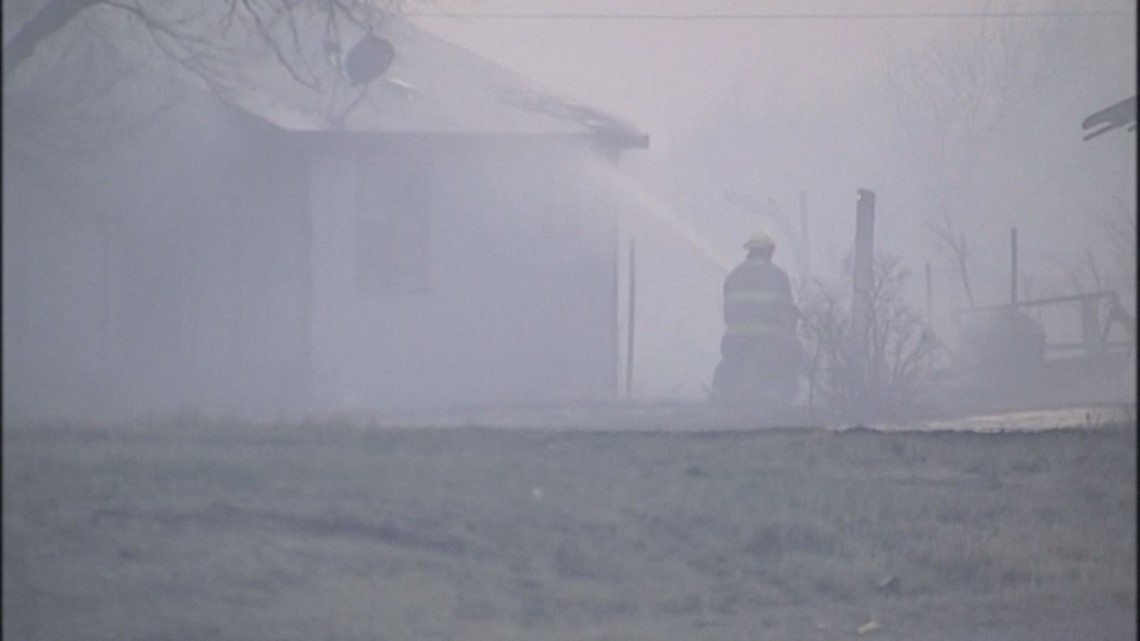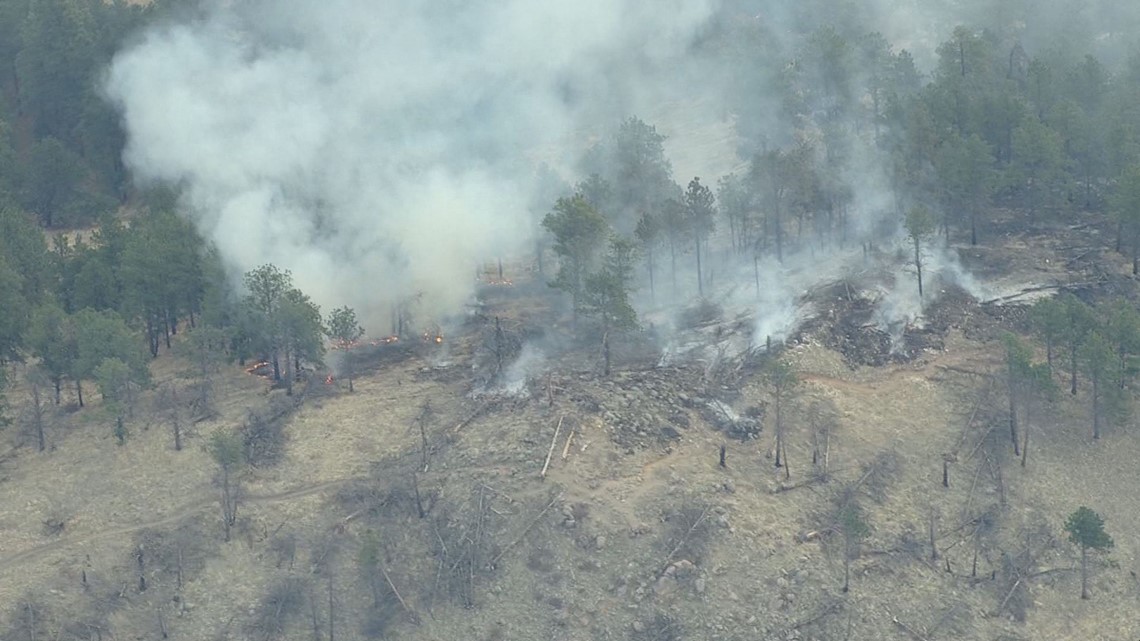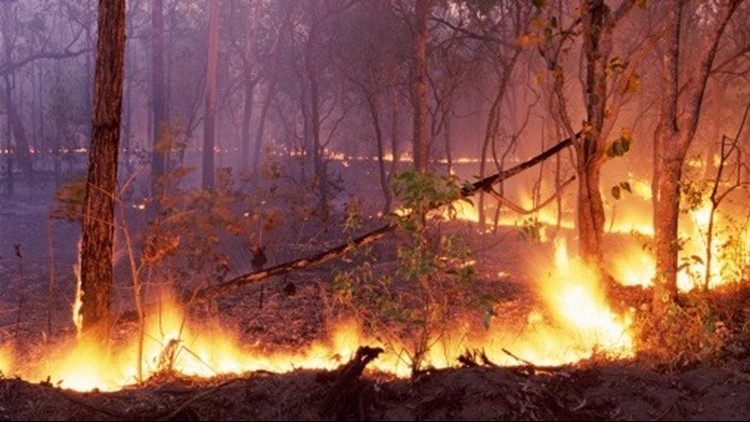KUSA — As the weather in Colorado starts to warm up, the threat of wildfires in the state increases.
Einar Jensen, a Risk Reduction Specialist with South Metro Fire Rescue, sat down with 9NEWS to answer some questions about wildfire season.
He offered up some tips on what to do if a wildfire is reported in your area.
Q. When is wildfire season in Colorado?
A. Wildfire season in Colorado is basically from Jan. 1 to Dec. 31. In other words, we can have a wildfire every day of the year in Colorado when there's not snow on the ground or we haven't had a big rain in hours.
RELATED: What to bring to a fire shelter
But it's the fine fuels or the small fuels like dead pine needles, grasses, dead leaves that carry most of our wildfires. And those respond to changes in relative humidity and moisture within an hour. So we can have a big rain storm and two days later with the hot dry weather, the wildfire season is right back on us.
Q. What percent of wildfires are caused by humans?
A. Humans are directly responsible for the majority of wildfires. Not only in Colorado, but around the country and probably around the planet.
Indirectly and directly it could be that human is not making good choices and they're burning slash in the backyard or they're flicking the cigarette or it's kids misusing fire. Or it could be a powerline that drops or a transformer that explodes. Directly that's not human-caused, but that's a human construct. And if we maintained all those systems better or buried those electrical lines, that fire wouldn't have started.
Q. What do you do if you start a brush fire?
A. If someone unintentionally starts a wildfire, if it's within the size of a waste paper basket, and they have that hose nearby or they have that fire extinguisher nearby certainly try to put it out. But something we humans forget how fast wildfires expand. Especially if there's a little bit of wind or a lot of dry fuel around.
If there's any doubt that the fire extinguisher can't take care of the fire, pull that cell phone out of the pocket and immediately call 911. You don't want to be stuck out there when this fire is racing through the neighborhood, or racing into the national forest or through the grassland and now we have to wait an additional few minutes for the firefighters to get there.


But really the solution is don't be stupid with fire if it's a hot, dry day. If there's a little bit of wind, anything that you're doing that involves fire, wait until the conditions get better. Respect, acknowledge, follow those burn ban requirements from the local county sheriff and don't be stupid. That's what is comes down to.
Q. What's the perfect weather cocktail to fuel a wildfire?
A. Wildfires ignite just like any fire ignites. If there's the perfect combination of oxygen -- we're on the Earth, so that's always around -- heat, and fuel. So any time we have a heat source and fuel that is dry, then that wildfire, or any other fire, can start.
With a wildfire, we're thinking about the amount of fuel, we're thinking about the weather. And we can't change the weather of course, so we as humans have to be careful when the weather conditions are ripe for fire. And those weather conditions are hot weather, low relative humidity which means air is dry and vegetation is dry and then a little bit of wind -- wind will actually pull moisture out of that fuel as well and the wind will actually drive more oxygen into the fire and push the fire in different directions.


So for us, any day where it's been hot (higher than 70 degrees for a couple days in a row) and dry, that's the ripest condition for a wildfire. With that said, you can still have a wildfire in the winter. In Colorado this year we hardly had any rain or snow east of the Front Range until April and May. So in the winter we can have wildfires as well.
Q. What is a prescribed burn?
A. A prescribed burn is when we as firefighters or other land managers use fire to change an ecosystem. Wildfire is a normal part of most ecosystems. Not just in Colorado, but around the planet. When we exclude wildfire from that ecosystem, that ecosystem doesn't evolve the way it has been for the past several millennia. So water quality can suffer, trees are not as tall or there are more trees than usual. The brush can get taller than what it can be expected to. The grass gets thicker, the wildlife habitat isn't as solid.
So just like how a prescription medication is something to help a human or a critter get better, prescribed fire is a way for that ecosystem to have medicine for lack of a better term so it can function as it did before we humans moved into that ecosystem.
Q. How do firefighters determine their firefighting strategy?
A. Firefighters will determine their strategy for engaging a wildfire based on their expectations of what the fire is going to do, as well as the current and expected weather pattern. So if they know a thunderstorm is coming up in the next hour or so, they're going to adjust their tactics and they're strategies to account for the wind that's going to shift around that thunderstorm whether it's the down drafts in front of that storm or the way the wind is going to shift coming from different directions as the storm passes.


Ultimately, all of those decisions are based on the context of keeping firefighters safe. As we all can imagine, dead firefighters are useless. So they're not going to risk everything, including their own lives, to try to stop a fire that's not safe to engage.
Q. What can homeowners do keep their homes safe from wildfire?
A. Homeowners have a huge responsibility when it comes to living in a wildfire zone. They have a responsibly to keep their family safe, but if they’re doing the right thing, they’re actually going to keep those firefighters safe by changing the dynamics of that wildfire.
And it’s easy for homeowners to do basic mitigation. This includes homeowners who are close to an open space area in any of the suburbs or next to a state park like Cherry Creek State Park. All of us have a responsibility. Part of that responsibility is making sure that your gutters are clear. If you have dead needles or dead leaves in your gutters, that’s just waiting for a heat source to cause a fire.
If you live in an apartment building, help the guys out a little bit and get some of those dead leaves out from around your area in your apartment building or condominium.
Other things we can do is choose fire resistant plants for our landscaping. Junipers, fitzers, Mugo Pines, Pinyon pines – we consider those all little green gas cans because they are so flammable; they’re explosive.
When they ignite, and they ignite easily, they can produce enough heat to endanger that house that’s adjacent to them. You can use those plants, but keep them at least 30 to 50 feet away from your home.
Homeowners can also make sure their address is posted so firefighters can see where the address is and can see the house. They can register for their county’s reverse notification system.
For example, in Douglas County, we have CodeRED. You can go to your county’s emergency management or sheriff’s office website to register for those systems. And contact your local fire department or the Colorado State Forest Service for those tips on how to make your home, your family and ultimately your firefighters as resistant to wildfires as possible.
Jensen has been with South Metro Fire Rescue for almost nine years, and has worked in fire service since 1998.


